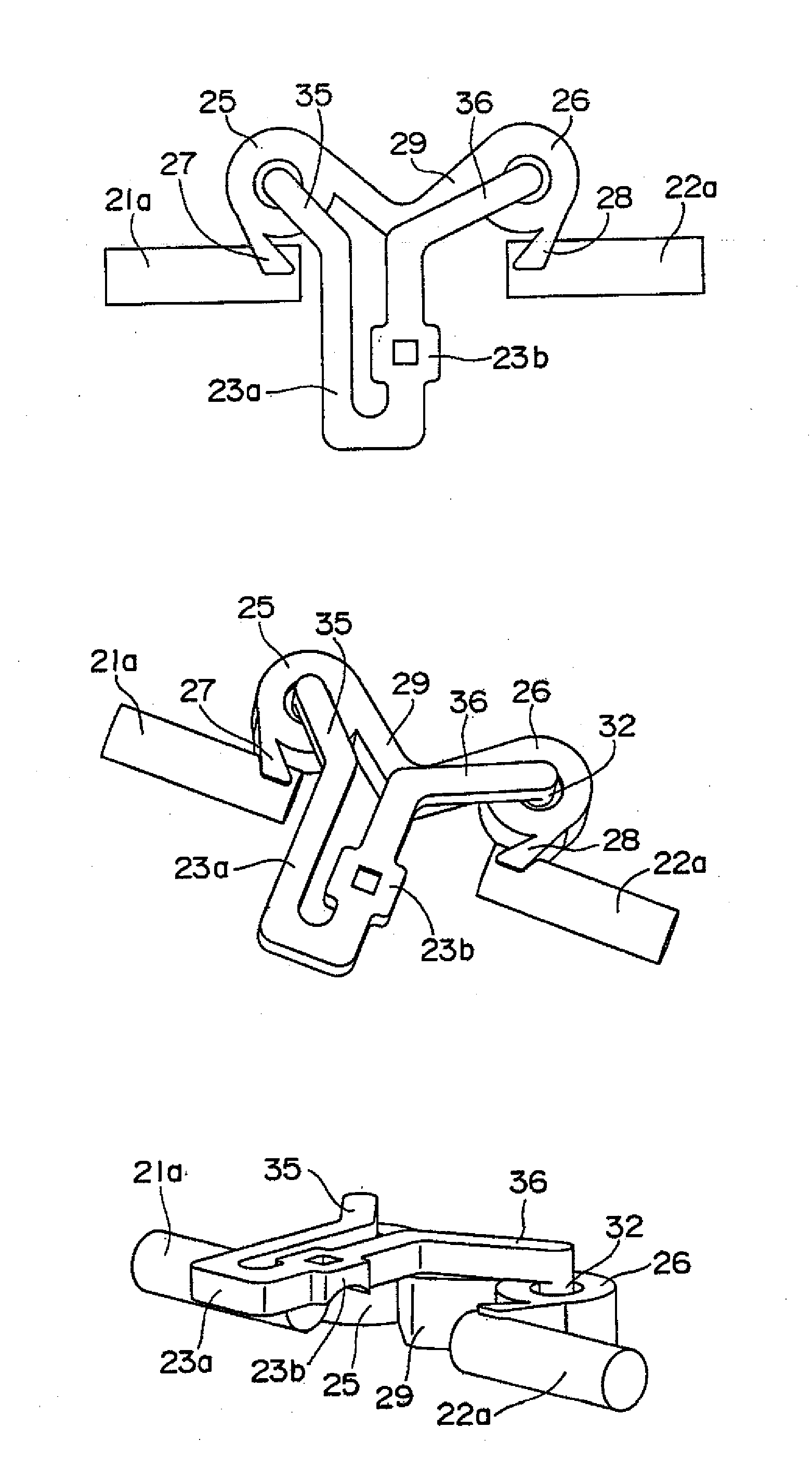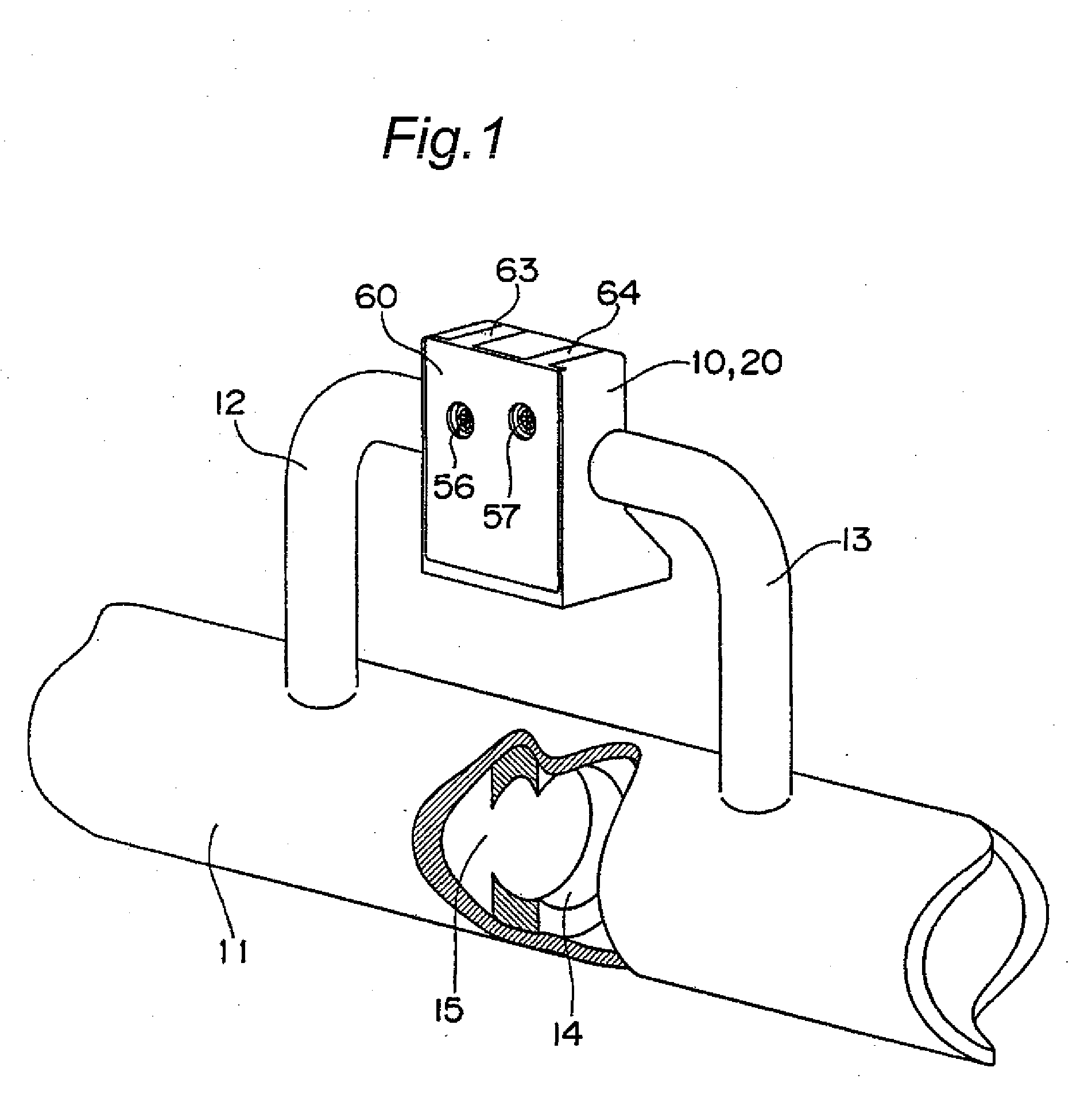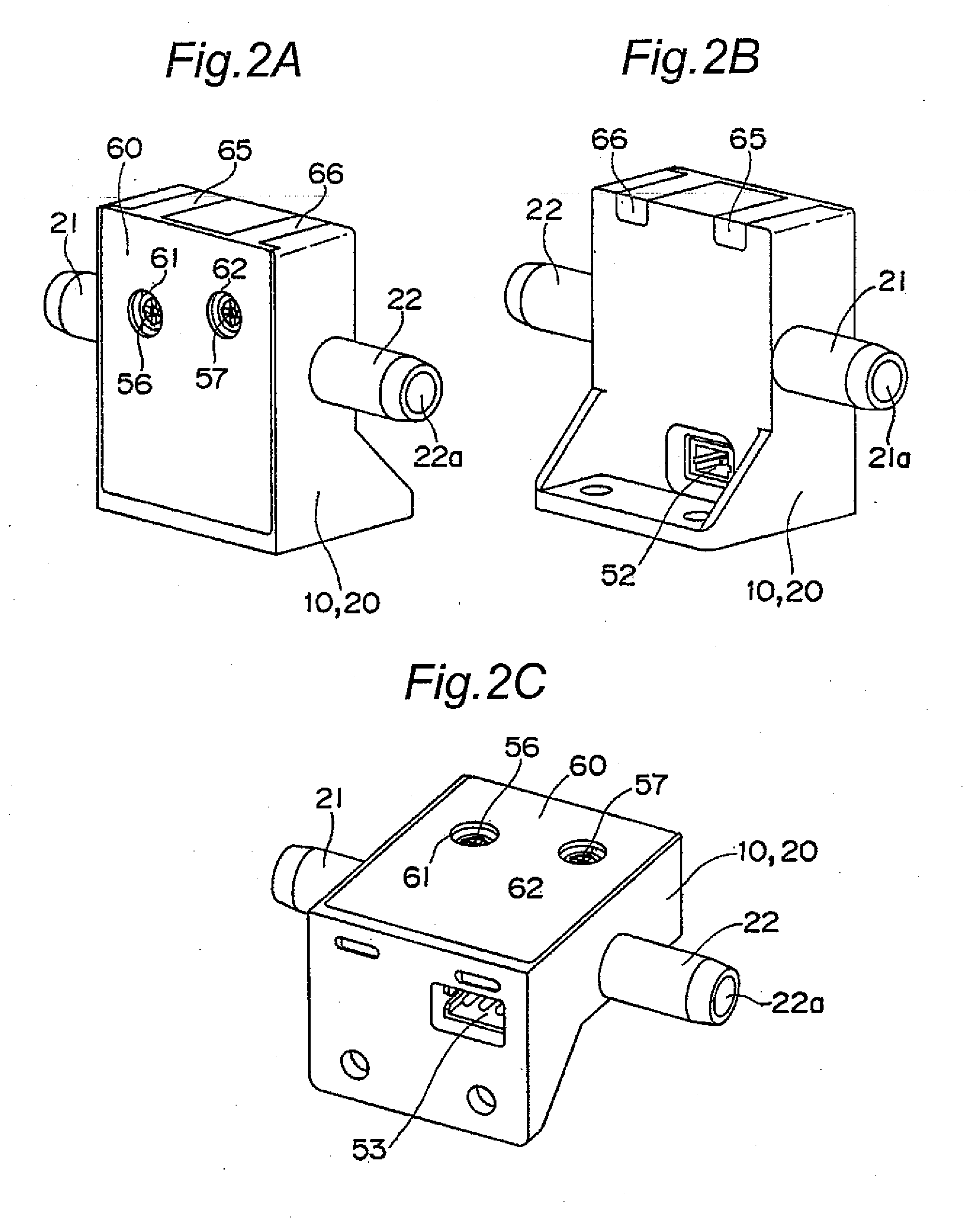Flow Rate Measuring Device
a technology of flow rate and measuring device, which is applied in the direction of liquid/fluent solid measurement, volume metering, instruments, etc., can solve the problems of measurement accuracy deterioration and become a cause of failure, and achieve the effect of preventing deterioration in measurement accuracy, long life and convenient maintenan
- Summary
- Abstract
- Description
- Claims
- Application Information
AI Technical Summary
Benefits of technology
Problems solved by technology
Method used
Image
Examples
example 1
[0109]As shown in FIG. 13A, the guiding flow channel extending from the secondary flow channel 22a to the inside of the centrifugal chamber 26 was arranged at an angle of 55° with respect to a flow direction of the secondary flow channel 22a, and the number of particles passing through the inside of the detection space portion 23b was calculated.
[0110]Analysis conditions were as follows. 10000 Particles having a diameter of 3 μm were put in at one time under conditions of a particle density of 3000 kg / m3 and an incoming flow rate of 1 L / min. The number of particles that passed the detection space portion 23b was counted. Therefore, it is shown that the smaller the number of particles, the less particles flow into the detection space portion 23b. The calculation results are shown in FIG. 15A.
example 2
[0113]As shown in FIG. 14A, each of the first and second guiding flow channels 27, 28 was inclined at an angle of 55° with respect to a flow direction of each of the first and second secondary flow channels 21a, 22a, and the intermediate flow channel 29 was formed straight, parallel to the first and second secondary flow channels 21a, 22a.
[0114]Then, particles were put in under the same conditions as those of Example 1. The number of particles passing through the detection space portion 23b was calculated and the number of particles remaining in the flow channels was calculated. The calculation results are shown in FIG. 15B and FIG. 15C.
example 3
[0115]As shown in FIG. 14B, Example 3 is almost the same as Example 2 described above. A difference is that the intermediate flow channel 29 was bent at an angle of 80° to form a generally V-shape.
[0116]Then, particles were put in under the same conditions as those of Example 1. The number of particles passing through the detection space portion 23b was calculated and the number of particles remaining in the flow channels was calculated. The calculation results are shown in FIG. 15B and FIG. 15C.
PUM
 Login to View More
Login to View More Abstract
Description
Claims
Application Information
 Login to View More
Login to View More - R&D
- Intellectual Property
- Life Sciences
- Materials
- Tech Scout
- Unparalleled Data Quality
- Higher Quality Content
- 60% Fewer Hallucinations
Browse by: Latest US Patents, China's latest patents, Technical Efficacy Thesaurus, Application Domain, Technology Topic, Popular Technical Reports.
© 2025 PatSnap. All rights reserved.Legal|Privacy policy|Modern Slavery Act Transparency Statement|Sitemap|About US| Contact US: help@patsnap.com



